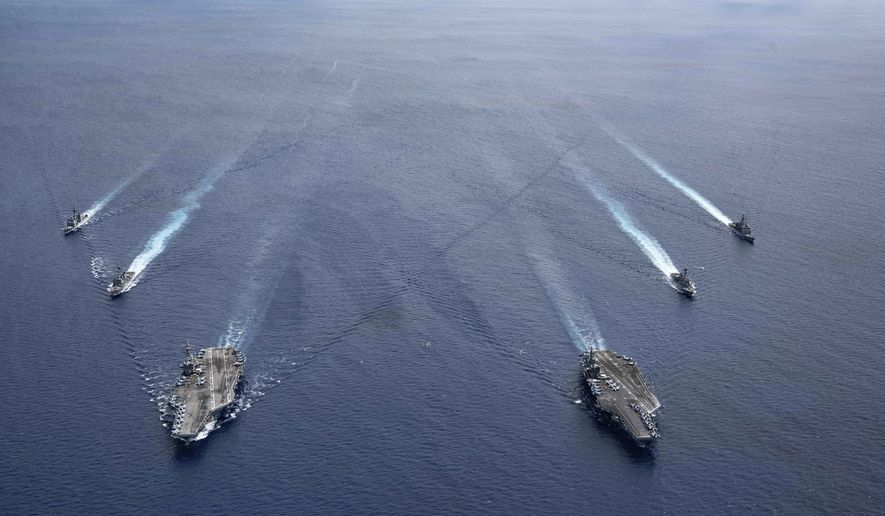A U.S. Navy aircraft carrier strike group led by the USS Ronald Reagan began conducting operations in the disputed South China Sea on Monday amid mounting U.S.-China tensions.
“The South China Sea is pivotal to the free flow of commerce that fuels the economies of those nations committed to international law and rules based order,” said Rear Adm. Will Pennington, commander of the Reagan strike group, in a statement by the Seventh Fleet.
“It is both a privilege and a pleasure to work alongside our allies, partners, and joint service teammates to provide full spectrum support to key maritime commons and ensure all nations continue to benefit from a free and open Indo-Pacific region.”
The carrier and accompanying warships entered the strategic waterway where China has expanded and militarized disputed islands.
“While in the South China Sea, the strike group is conducting maritime security operations, which include flight operations with fixed and rotary wing aircraft, maritime strike exercises, and coordinated tactical training between surface and air units,” the Navy statement said, describing as part of the Navy’s “routine presence in the Indo-Pacific.”
Along with the Reagan, the guided missile cruiser USS Shiloh and guided missile destroyer USS Halsey are part of the operation.
The carrier strike group operations follow the deployment of the guided missile destroyer USS Curtis Wilbur and the Australian Navy frigate Ballarat during operations from June 6 to June 11.
“Wilbur and Ballarat demonstrated the Navy’s commitment to work with like-minded allies and partners to preserve international order in the South China Sea,” the Navy said.
The Navy said it is “committed to upholding U.S. security agreements with regional allies and partners, as well as demonstrating the capability of forward-deployed naval forces to quickly respond to any contingency across the region.”
Maintaining freedom of the seas in the South China Sea is “vitally important,” the statement said, adding that around $3.5 trillion of global maritime trade is carried out there, including a third of global crude oil shipments and half of world liquefied natural gas shipments annually.
China has ramped up its military presence in the South China Sea by building up artificial islands and putting air bases on the islands. The militarization, according to the Pentagon, includes deployment of advanced anti-ship and anti-aircraft missiles on some of the disputed Chinese islands.
China in the past has dispatched warships near U.S. warships in the sea and warned them to leave the area.
In May, the Navy denied Chinese state media reports that Chinese navy ships had forced the USS Curtis Wilbur, a guided missile destroyer out of waters near the disputed Paracel Islands in the northern part of the South China Sea.
In 2020, the State Department announced in a formal declaration that most Chinese claims to the sea were “completely unlawful” under international law. The declaration cited a 2016 ruling by an international tribunal that found China has no historic claims to owning the sea.
• Bill Gertz can be reached at bgertz@washingtontimes.com.




Please read our comment policy before commenting.